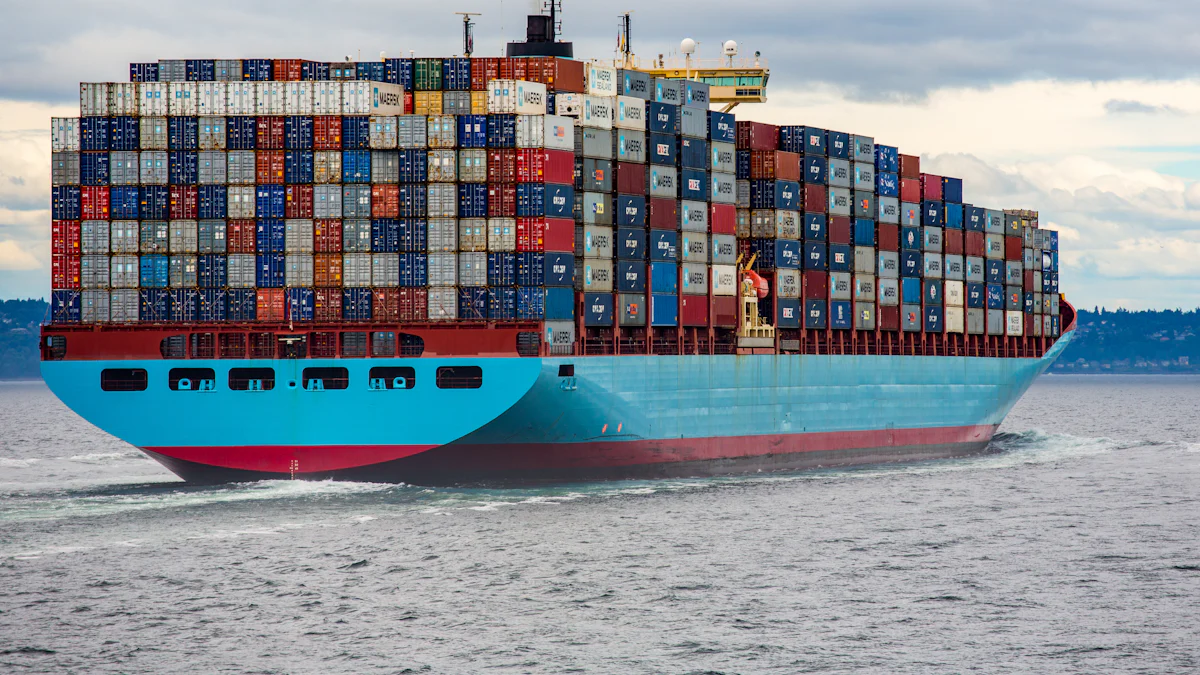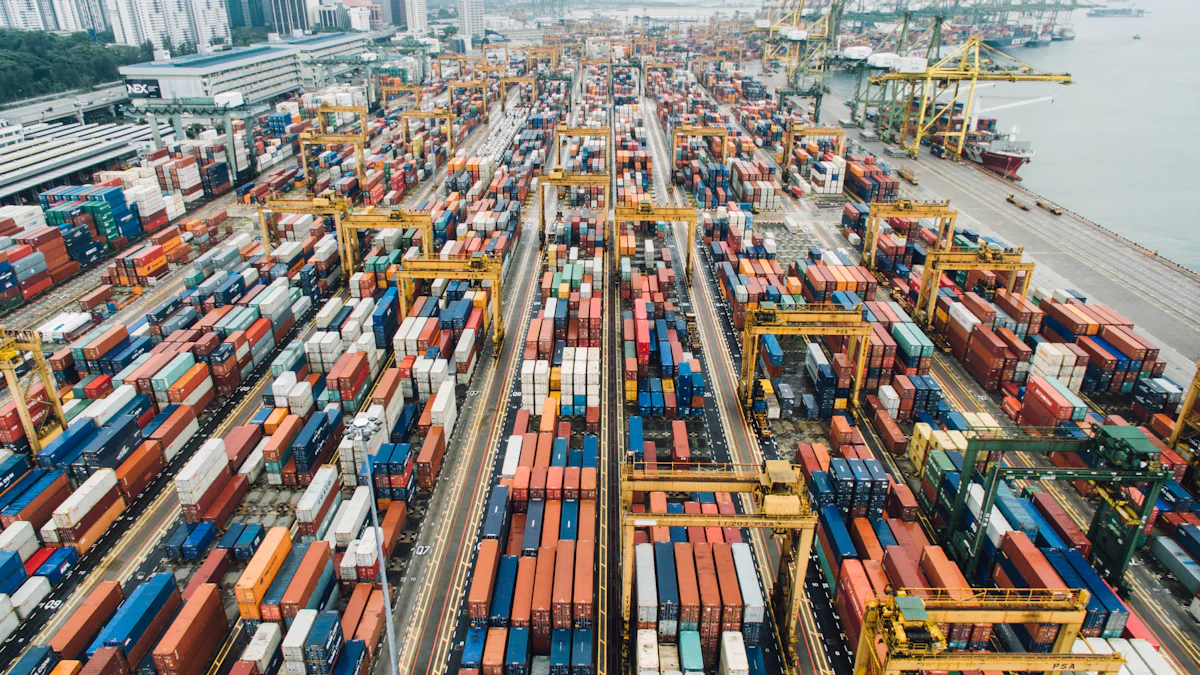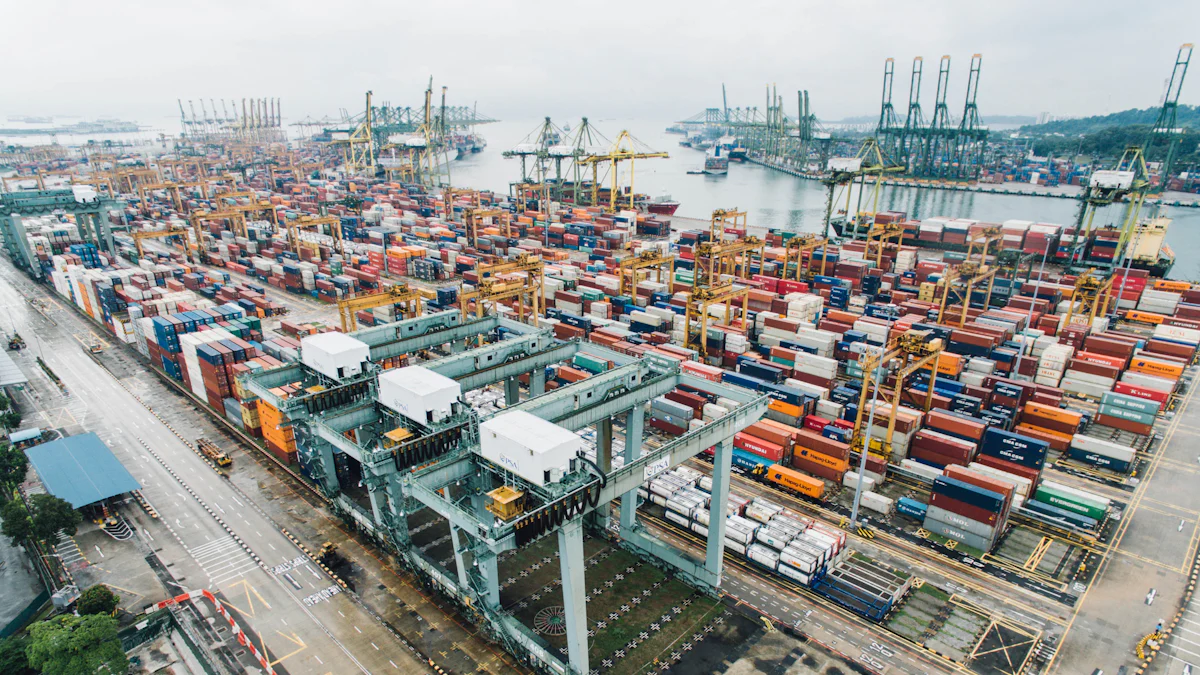Analyzing China's Manufacturing Export Boom

China's manufacturing sector has become a global powerhouse. The sector produces almost a third of the world's manufactured goods. Manufacturing exports play a crucial role in China's economy. These exports drive economic growth and create employment opportunities. The rise in overseas sales of manufactured goods boosts the nation's economic standing.
Historical Context
Evolution of China's Manufacturing Sector
Pre-reform Era
China's manufacturing sector faced significant challenges before the economic reforms. The government controlled all industries, which led to inefficiencies. Factories operated with outdated technology. Production levels remained low. The focus was on meeting domestic needs rather than exporting goods.
Post-reform Developments
The landscape of China's manufacturing changed dramatically after the reforms. The government introduced market-oriented policies. These policies encouraged private investment. Modern technology and management practices were adopted. As a result, production efficiency improved. Exports began to increase, marking the start of China's manufacturing export boom.
Key Policies and Reforms
Economic Reforms of the 1980s
The 1980s marked a pivotal period for China's manufacturing. The government implemented several key reforms. Special Economic Zones (SEZs) were established. These zones attracted foreign investment. Tax incentives and relaxed regulations encouraged businesses to set up operations. The influx of capital and technology boosted manufacturing capabilities.
WTO Accession and Its Impact
China's accession to the World Trade Organization (WTO) in 2001 had a profound impact. Membership in the WTO opened global markets to China's manufacturing exports. Tariffs on Chinese goods were reduced. Trade barriers were lowered. This facilitated easier access to international markets. Consequently, China's manufacturing sector experienced unprecedented growth.
Factors Driving the Export Boom

Competitive Advantages
Labor Costs
China's manufacturing sector benefits from low labor costs. Workers in China earn lower wages compared to workers in developed countries. This cost advantage allows Chinese manufacturers to produce goods at a lower price. Lower production costs make Chinese products more competitive in international markets. Many companies choose to outsource production to China to save on labor expenses.
Technological Advancements
China's manufacturing has seen significant technological advancements. Factories have adopted modern machinery and automation. Advanced technology increases production efficiency. High-tech equipment reduces errors and improves product quality. Chinese manufacturers invest heavily in research and development. This investment leads to innovation and better manufacturing processes.
Government Policies
Export Incentives
The Chinese government provides various export incentives. Tax rebates and subsidies encourage manufacturers to export goods. These incentives reduce the overall cost of production. Lower costs make Chinese products more attractive to foreign buyers. The government also offers financial support for exporters. This support helps businesses expand their operations and reach new markets.
Infrastructure Development
China's manufacturing sector benefits from extensive infrastructure development. The government invests in building roads, ports, and railways. Efficient transportation networks facilitate the movement of goods. Improved logistics reduce shipping times and costs. Modern infrastructure supports large-scale manufacturing operations. This development enhances China's ability to meet global demand for manufactured goods.
Supply Chain Dynamics

Role of Global Supply Chains
Integration with International Markets
China's manufacturing sector has seamlessly integrated into global supply chains. Chinese factories produce components for various industries worldwide. Many multinational companies rely on China's manufacturing for assembly and production. The integration allows for cost-effective and efficient production processes. This interconnectedness enhances the global competitiveness of Chinese products.
Dependence on Raw Material Imports
China's manufacturing heavily depends on raw material imports. The country imports essential materials like metals, chemicals, and textiles. These imports support the vast manufacturing base. The reliance on foreign raw materials poses risks. Disruptions in supply chains can impact production schedules. Ensuring a steady flow of raw materials remains crucial for maintaining manufacturing output.
Impact of Trade Policies
Tariffs and Trade Wars
Trade policies significantly affect China's manufacturing exports. Tariffs imposed by other countries can increase the cost of Chinese goods. Trade wars create uncertainty and disrupt supply chains. Manufacturers face challenges in maintaining competitive pricing. The government must navigate these complexities to sustain export growth. Strategic adjustments help mitigate the adverse effects of tariffs and trade disputes.
Regional Trade Agreements
Regional trade agreements play a vital role in shaping China's manufacturing landscape. Agreements like the Regional Comprehensive Economic Partnership (RCEP) facilitate easier market access. These agreements reduce tariffs and simplify trade regulations. Enhanced cooperation with neighboring countries boosts export opportunities. Regional partnerships strengthen China's position in the global market.
Economic and Social Implications
Domestic Economic Growth
GDP Contribution
China's manufacturing exports significantly contribute to the nation's GDP. The revenue from these exports boosts economic growth. The manufacturing sector's performance directly impacts the overall economy. Increased production and sales lead to higher GDP figures. The export boom strengthens China's financial stability.
Employment Generation
The manufacturing sector creates numerous job opportunities. Factories employ millions of workers. The demand for labor supports various industries. Employment in manufacturing reduces poverty levels. The sector's growth leads to improved living standards for many citizens.
Global Economic Impact
Trade Imbalances
China's manufacturing exports create trade imbalances with other countries. The high volume of exports exceeds imports. This imbalance affects global trade dynamics. Countries importing Chinese goods face trade deficits. The situation influences international economic policies and relations.
Influence on Global Markets
China's manufacturing exports shape global markets. The availability of affordable goods impacts consumer choices worldwide. Chinese products dominate various sectors, including electronics and textiles. The competitive pricing forces other manufacturers to adjust strategies. China's role in global trade continues to evolve, affecting market trends and economic policies.
Challenges and Future Outlook
Environmental Concerns
Pollution and Sustainability Issues
China's manufacturing sector faces significant environmental challenges. Factories contribute to air and water pollution. Industrial waste impacts ecosystems. The rapid pace of industrialization strains natural resources. Pollution affects public health and quality of life. Addressing these issues requires substantial effort.
Government Initiatives for Green Manufacturing
The Chinese government has launched initiatives to promote green manufacturing. Policies encourage the adoption of cleaner technologies. Regulations mandate reductions in emissions. Financial incentives support companies investing in sustainable practices. The focus on renewable energy sources aims to reduce reliance on fossil fuels. These efforts seek to balance economic growth with environmental protection.
Technological Disruptions
Automation and AI
Technological advancements present both opportunities and challenges. Automation and artificial intelligence (AI) transform manufacturing processes. Robots and AI systems increase production efficiency. These technologies reduce labor costs. However, automation displaces workers. The shift requires retraining programs for affected employees. Balancing technology adoption with job preservation remains a critical issue.
Industry 4.0
Industry 4.0 represents the next phase of industrial revolution. Smart factories integrate digital technologies. Internet of Things (IoT) devices enable real-time monitoring. Data analytics optimize production workflows. Advanced manufacturing techniques enhance product quality. Embracing Industry 4.0 requires significant investment. Companies must adapt to stay competitive in the global market.
China's manufacturing sector has evolved into a global leader. Key reforms and policies have driven this transformation. Competitive advantages and government support have fueled export growth. The integration with global supply chains has enhanced efficiency. Manufacturing exports have significantly contributed to China's GDP and employment.
The future of China's manufacturing exports appears promising. Technological advancements and green initiatives will shape the sector. However, challenges like environmental concerns and trade policies remain.
China's manufacturing boom impacts global markets and trade dynamics. The sector's growth influences consumer choices and economic policies worldwide.
See Also
Unlocking Achievement: High-Tech Manufacturing Consultation Demystified
Efficient Strategies for High-Tech Manufacturing's Logistics Challenges
Guiding Efficient Logistics for High-Tech Manufacturing Triumph
